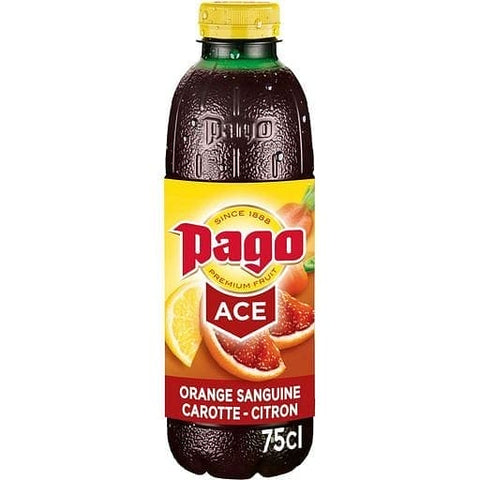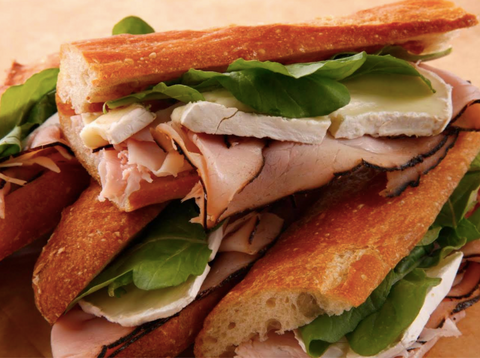What is a French ham?
French ham is a popular charcuterie product. It is delicious when served with bread and butter or when added to dishes like a traditional French Croque-Monsieur sandwich. However, the most famous dish made with French ham is the Croque Madame, a fried egg and cheese sandwich.
The main difference between all types of French ham is how they were prepared. All French hams are from pigs, but some are spiced, and others are not. The best way to buy ham is to purchase it from delis, which sells specialty foods.
This is an easy one to get right:
Buy ham from France. However, the problem is that there are so many types of French ham that it may be hard to choose the right one. French ham is a cured meat made by curing and air-drying pork legs. It is the most traditional French charcuterie and can be found in every region of France. Most people think of a French ham as a thin slice of cured pork, but that's not entirely accurate. There are different French hams with different ways to prepare them and different tastes for each region.
What is jambon-beurre made of?
- The "jambon-beurre" (ham-butter) is the most famous French sandwich. It comprises a baguette and butter, ham, pickles, or cornichons. The bread must be a baguette. It has to be fresh and crisp.
- The best way to eat it is to toast it, but usually, you buy it in a bakery, and it is still warm.
- The butter has to be unsalted, and you have to spread it on the baguette while still warm.
- Ham can be any ham, but the most popular one is "jambon de Paris," a lightly smoked and cooked ham that you can find almost everywhere in France. It has to be cut into thin slices and placed on the butter.
- Pickles are optional. They are cornichons and small sour pickles found in every grocery shop. Usually, they come in vinegar, and you have to put them on top of the ham.
The jambon-beurre is a traditional French sandwich made with unsweetened butter and ham on a baguette. In France, it is often eaten as an afternoon snack. The sandwich's name means "ham and butter."
The bread used is a baguette, which is sliced lengthwise so that the filling can be inserted between the pieces. The bread is then toasted or fried in a pan.
The French ham used in this sandwich usually is raw and comes from the Bayonne region of France. The slices of ham are placed on the bread and maybe topped with cornichons, Dijon mustard, pickled gherkins, mayonnaise, or cheese such as Comté. The sandwich may also include other types of meat such as salami or saucisson sec (dried sausage), but these are less common than the version made just with ham and butter.
The nutty taste of the butter complements the salty taste of the ham to create a good combination of flavors.
Why is jambon-beurre so popular?
Jambon-beurre is a ham sandwich on a baguette. But it is a French ham sandwich, so it involves the best butter and the best bread. The butter has to be cold enough that it is firm so that you can spread it over the warm bread without tearing holes in its crust. The ham has to be the right thickness — thin enough to taste the meat and not just the grease, but thick enough that you don't tear through it as you bite down on your sandwich. The baguette should be fresh so that it is not too hard or too soft when eating your sandwich.
The jambon-beurre is not just famous because of these factors — what makes it unique is how they come together. There are many sandwiches with excellent meats or bread or sauces; jambon-beurre combines them all into one perfect package. That's why even though Parisians have access to some of the best restaurants in Europe they still flock to specialty shops for their lunchtime sandwiches every day.

What is jambon-beurre in Paris?
Our jambon-beurre is a typical Parisian sandwich, but it also serves as an example of the French capital's culinary diversity.
Come to Paris, and you'll find a wide variety of cuisines, including Italian, Indian, Japanese, Vietnamese, and more. And in recent years, we've even been seeing some pretty great Mexican food. But we're not going to lie: Parisians love their traditional French dishes. You'll find steak-Frites (steak with fries) on most bistro menus, and you can buy crêpes from street vendors around every corner.
One of the most popular lunch options is the jambon-beurre or ham sandwich. Fresh baguettes filled with butter and ham is served at bakeries across town for about four euros a pop for this simple dish.
An essential part of Parisian culture
It might not seem that interesting to outsiders, but jambon-beurre is an essential part of Parisian culture. In the 1920s, Ernest Hemingway often ate them for lunch at the Closerie des Lilas when he started as a writer. The restaurant that now stands on the same
What kind of ham is jambon?
Jambon is the French word for "ham" and is used in English, primarily in recipes and restaurants. While jambon refers to any ham, it usually means it is not smoked or salted. You can find all different kinds of jambon, from the delicate flavors of prosciutto to the earthiness of Serrano.
There are many different kinds of jambon throughout France, but some of the best-known are Bayonne Jambon and Parisian Jambon. Bayonne Jambon has been produced in southwest France since the 13th century. The hams are dry-cured with sea salt for six weeks and aged for up to a year. They have a rich flavor that pairs well with cheese and wine. This type of jambon is often used as an ingredient rather than eaten on its own — for example; you might see it added to salads or on top of pizza.
Parisian Jambon is slightly milder than Bayonne Jambon, with a sweeter taste. The hams are prepared with white wine, pepper, and garlic before being cured with sea salt for two weeks and then air-dried for several months.
What is the most popular sandwich in France?
The most popular sandwich in France is the jambon-beurre, or ham and butter sandwich, but it is not the French version of a ham sandwich. The two slices of bread are made from a soft baguette sliced down the middle and filled with individually wrapped pieces of butter and ham. It is usually served on wax paper, never with condiments and costs as little as three euros.
How is Jambon de Paris made?
Jambon de Paris is French for "Ham from Paris," but it is not what you think. It is a mild, cured ham made from the pork loin. The meat is cut into strips and put into a slightly sweet brine of water, salt and sugar. The strips are then hung to dry for up to 60 days but usually only take two or three weeks.
When it is done drying, the ham is trimmed and rubbed with a mixture of herbs and spices, including black pepper, coriander seeds, and garlic. Then it is air-dried for anywhere from 14 days to several months. The ham is ready to eat as soon as it is done drying, but it can be stored in the fridge for up to six months.
Jambon de Paris, also known as Jambon de Bayonne, is a traditional French ham made from the back leg. It is similar to prosciutto in that it is dry-cured and thinly sliced. Jambon de Paris is meant to be eaten raw and is not smoked. The name "Jambon de Paris" means "Ham of Paris," which might lead you to think it originates from the city of Paris, but this is not the case. It is produced in several regions of France under strict control by the French government.
The Curing Process
The ham is cured for about two months using salt, pepper, and other spices like garlic, nutmeg, and cloves. The meat is then rubbed with lard before going through another curing process with more salt and white wine. The final step in the curing process involves hanging the ham in a cool room for several weeks to allow it to dry out before it can be sold.
What Does Jambon de Paris Taste Like?
The taste of Jambon de Paris depends on what parts you purchase. The loin section (the eye) has a milder flavor than the knuckle section (the foot). Both cuts are lean and
The Vietnamese jambon
Vietnamese jambon is a famous sandwich in Vietnam. It is also known as Vietnamese ham sandwich. The word jambon comes from the French word. Jambon means ham. The Vietnamese jambon is made from white bread, toasted, and spread with butter or margarine. The filling includes slices of ham, fried egg, and vegetables like cucumber, cilantro, carrot, pickled daikon radish (do Chua), and chili pepper.
While it is not an authentic Vietnamese dish, it has become so popular that it can be found almost everywhere in Vietnam, from street vendors to upscale restaurants.
Jambon is pork-based deli meat that originated in Vietnam. It was first introduced in the United States by Vietnamese immigrants after the Vietnam War, and it has since become a staple of many Vietnamese restaurants. Jambon is often served with bread as a sandwich, or it can be used to fill other foods such as spring rolls. It is typically made from pork shoulder and seasoned with salt, sugar, garlic, chili, and fish sauce for flavoring in Vietnam.
After making jambon at home, many people like to eat it on freshly baked French bread with vegetables. This dish is called banh mi.
Some people also like to eat jambon as a snack with rice wine vinegar and soy sauce. The meat can also be eaten on its own or served with fresh vegetables such as cucumber slices or shredded carrots.
Jambon is commonly eaten at breakfast time in Vietnam. It is often served alongside other dishes such as egg rolls and noodles.
French cooked ham
Cooked ham is a meat product with low-fat content obtained by cooking raw ham. The manufacturing process is similar to that used to make cooked ham, but the cooking time is shorter.
After being immersed in water at 60 ° C for 30 minutes, the hams are cooked at 80 ° C. They are not smoked and undergo a sterilization process (pasteurization). The name "cooked ham" indicates the manufacturing process and does not refer to the consumption mode (cold or hot).
There are two types of cooked ham:
- Extra-cooked ham: prepared from fresh legs, it has a protective skin and a short shelf-life;
- Cooked ham: prepared from salted and smoked legs, it is sold in vacuum packs or slices in transparent packaging (block or film) and has a long shelf life.
What does French Ham look like?
The shape of the French ham is similar to the form of a trapezoid. It is flat on one side and rounded on the other. A whole French ham can range from about 5 to 6 kilos (11 to 13 pounds). The ham is cooked but not smoked or salted. The skin of a French ham is thin and brittle and can easily be removed by running a knife under it. You can cut off the skin as you need it or remove it.
French hams are richly marbled with fat - they are often referred to as "fat pigs." This fat means that they are straightforward to cook, and one way to do this would be in a crockpot or slow cooker.
Monsieur, perhaps you like to eat with your eyes as well. We have three main categories of ham in France: Dry (sec), Semi-Dry (entre sec et demi-sec), and Semi-Wet (entre demi-sec et demi-cut). Each has its look, taste, and best use.

Dry Ham
This is the most common form of French ham. From a regional point of view, it can be made from various pigs, but the most well-known are Bayonne, Jambon de Paris, and Vendée ham. Most dry hams are made from the pig's hind legs, but some are made from the shoulder as well.
Semi-Dry Ham
This is a happy medium between dry and wet hams. It has more moisture than the dry ham and is usually not as salty. The two most popular semi-dry hams are Serrano ham from Spain and Prosciutto di Parma from Italy.
Semi-Wet Ham
The term semi-wet refers to a cured ham by injecting it with brine instead of massaging the salt like a dry ham.
So you have to try this Jambon Beurre at least once!




